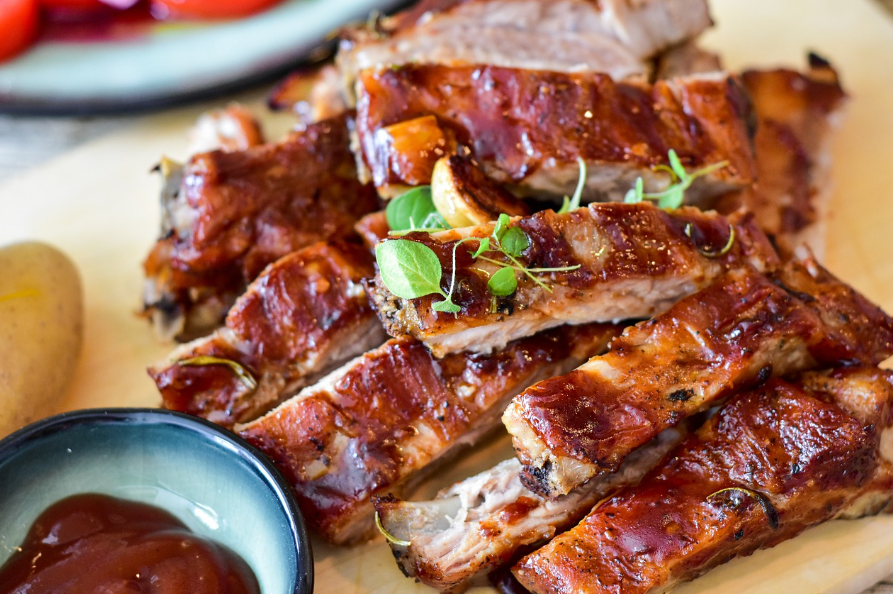Suwon King Galbi, a signature dish of Suwon, is beloved for its tender texture and rich flavor. Featuring generously sized ribs, thinly sliced and rolled into elegant shapes, and marinated in a special salt-based seasoning, this iconic dish is a must-try for food lovers exploring Korea’s culinary treasures. In this post, we’ll dive into the history, unique features, and the best ways to enjoy Suwon King Galbi.

When to Enjoy Suwon King Galbi?
Since Suwon King Galbi is marinated meat, it’s perfect for all seasons. Whether on a cold winter day or as a summer treat paired with chilled noodles, this dish is always a great choice.
Where to Find Authentic Suwon King Galbi?
Across Suwon, you’ll find many renowned King Galbi restaurants with rich histories. For the best experience, visit the areas near Suwon Station or around Janganmun Gate, where traditional and modern culinary styles converge.
The Origin of Suwon King Galbi: The Legendary Hwachunok
Suwon King Galbi’s story begins in 1945 at Hwachunok (華春屋), a restaurant near the Suwon cattle market. Originally a hangover soup spot, Hwachunok gained popularity for its generous servings of beef ribs in their soups.
In 1956, the restaurant introduced a new menu: marinated beef ribs grilled to perfection. This new dish quickly became a hit and gained nationwide fame, with notable political figures, including former President Park Chung-hee, visiting the establishment to enjoy the delicacy.
After Hwachunok closed in the early 1980s, its chefs opened their own King Galbi restaurants throughout Suwon. Today, Suwon boasts over 30 King Galbi specialty restaurants. Visitors can also explore the reconstructed Hwachunok display at the Suwon History Museum to learn more about this culinary legacy.
What Makes Suwon King Galbi Unique?
1. A Distinctive Marinade
Unlike other galbi dishes typically marinated with soy sauce, Suwon King Galbi uses a salt-based marinade. The key ingredient is refined salt made from seawater, combined with sugar in a 6:1 ratio. This basic mixture is further enhanced with sesame oil, minced garlic, and black pepper to create a perfectly balanced flavor.
2. Size Fit for a King
The dish earned its name thanks to the generous size of the ribs. While similar dishes like Ildong-style galbi have ribs that measure only 3–5 cm, Suwon King Galbi historically featured ribs up to 17 cm long. Even today, the ribs measure over 10 cm, offering a substantial and satisfying dining experience.
The Art of Preparing Suwon King Galbi
Suwon King Galbi uses the middle ribs of a cow, a section known for its perfect balance of lean meat and fat. Preparing the dish is labor-intensive, requiring careful removal of connective tissues and fat. Once cleaned, the meat is thinly sliced, marinated, and rolled around the bone to lock in flavor.
For those wondering why many Suwon King Galbi restaurants also offer dishes like galbitang (beef rib soup) or galbijjim (braised ribs), it’s because the front and back sections of the ribs are typically used for these dishes, ensuring no part goes to waste.
How to Enjoy Suwon King Galbi
Suwon King Galbi is traditionally paired with warm rice, but it also goes wonderfully with cold noodles like mul naengmyeon (cold water noodles) or bibim naengmyeon (spicy mixed noodles). The savory flavor of the galbi complements the refreshing noodles for a truly satisfying meal.
In Conclusion
Suwon King Galbi is more than just a delicious dish—it’s a piece of Korean history and culture. Its tender, flavorful meat and unique preparation make it a must-try for anyone visiting Suwon.
Next time you’re in Suwon, don’t miss the opportunity to savor this iconic dish!
Source: Republic of Korea Policy Briefing (www.korea.kr)
'English > Korean Cuisine (K-Food)' 카테고리의 다른 글
| Budae Jjigae: A Taste of Korean Creativity and Resilience (0) | 2025.01.18 |
|---|---|
| Korean Culinary Adventure: The Story of Jjajangmyeon (0) | 2025.01.16 |
| Korean Soy Sauce Marinated Crab: A Unique Culinary Delight (0) | 2025.01.14 |
| Two Nutrient-Packed Winter Seafood Delights: Yellowtail and Trout (0) | 2025.01.13 |



